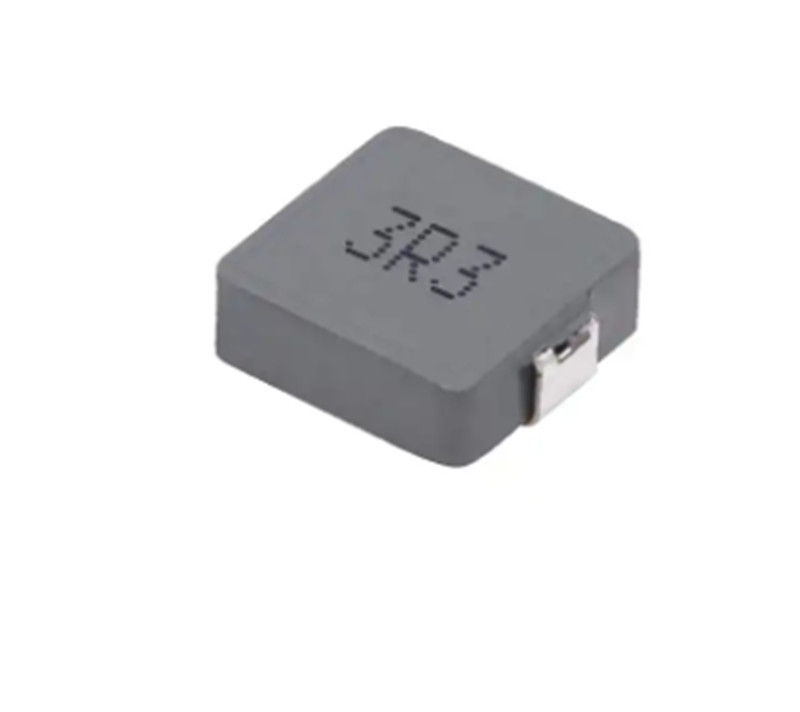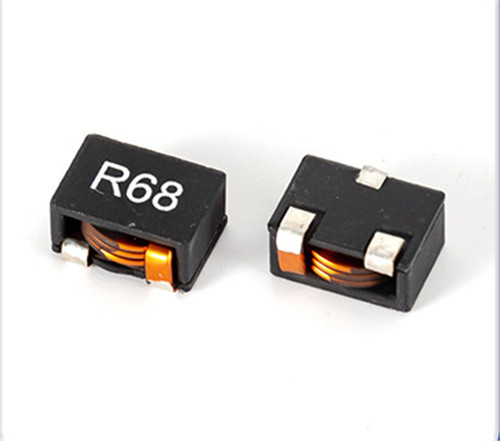Once upon a time, a nerd met a girl. Things happen as they do, and eventually [Ben] wanted to create the be-all, end-all engagement ring. (here’s a cache) It’s a simple titanium affair with 23 stones around the perimeter. What makes this ring so cool, though, is that it lights up whenever [Ben] and his girl are holding hands.
The metalworking portion of the build was about as easy as you would expect machining titanium to be. After the ring was cut off its bar stock, [Ben] brought it over to a mill where 23 holes for each of the stones were drilled. The stones were affixed to the ring with jewelers epoxy and the entire ring was buffed to an amazing shine. Self Induction And Mutual Induction

The electronics are where this project really shines. Putting a battery of capacitor inside a ring is nigh impossible, so [Ben] decided to power the LEDs with an inductive charging circuit. A coil of wire wound around kapton tape serves as the inductor and a small SMD capacitor powers three very bright and very tiny LEDs.
The inductive charging unit itself is a masterpiece of hackery; [Ben] wanted the ring to light up whenever he and his ladyfriend were holding hands. To do this, [Ben]’s inductive charger is also a wearable device: a large coil of wire is the charger’s transformer and was would to fit around [Ben]’s wrist. The entire charging circuit can be easily hidden under a jacket sleeve, making for a nearly magical light-up ring.
An awesome piece of work, and one of the best jewelry builds we’ve seen in a long time. You can see the inductive coupling and shining LEDs in the video below.
[youtube=http://www.youtube.com/watch?v=UsacJ6mttIM&w=580]
this is what happen when you get married: https://www.youtube.com/watch?feature=player_embedded&v=5JprvbNppFY
Thank God my wife doesn’t read HAD…
Heh, yep. Setting the bar a little high for the rest of us, huh [Ben]? ;)
Thank goodness it isn’t also a Larson scanner, which was my first impression from the picture. Maybe [Ben]’s saving that for the wedding ring.
To get a Larson Scanner in this size you would probably need to use a bare die Microcontroller.
PIC10F200 would work in SMD form
why not a counter and a 555?
That’s 2 vs 1 package you need to cram. Plus you can do PWM Knight Rider fades
No, even in it’s smallest package that’s still too big unless you physically removed part of the band for the PIC(which would make things pretty unsound structurally).Bare die could fit in a gem slot with bond wires running to leds then epoxy.
You could cram them into a hueg mother of a jewel, make that light up.
Any way we could power it with a Peltier to run off body-heat?
It would be awesome if hackaday could serve mirrors.
Simply breathtaking. This is what magic is all about.
You should clarify that statement for the non-jewelers.
If you read the article you would know ;-) (tip: it’s not permanent. real rings have the metal holding the stone, one way or another)
i’d totally use gold or silver for this hack. soldable. maleable. don’t know about the electrical properties about canceling the inductive effect. but would make it all oh so much easier.
So glad someone said something. Glue in an engagement ring. The entire idea of the ring is very cool, I just hope the relationship lasts longer than the stones will in this ring. And titanium is another yucky metal for jewelry. Non-sizeable, non-reparable, non-precious. Still, cool idea.
Titanium is an excellent material for jewelry. It’s cheap, beautiful, durable and wonderfully hypoallergenic, and if you buy the right size in the first place you don’t have to have it re-sized (unless you’re a child who is still growing). I have a hard time with even the purest gold and silver alloys due to metal allergies, but I’ve never had a problem with wearing titanium.
“Once upon a time, a nerd met a girl.” Ah, so this is fantasy! :)
he really needs to patent this quickly. I can see a bunch of over-priced $cumbag jeweler$ ripping off this idea and calling it their own.
btw, this is very cool. maybe a necklace and other “accessories” that light up in possibly intimate places when close together.
It’s published here anyway. Call me a lawyer, but doesn’t that mean “proof of prior art” and therefore nobody else can patent it? He might have trouble himself, now, generally one is supposed to keep these things secret til the paperwork’s all in.
If they don’t find it in the initial patent research (cause they are lazy fuuks and/or overworked and/or dumb) the patent would be granted, then you would have to either sue to find the patent ineligible or be sued and use that as a defense. Not exactly helpful.
I can definitely see someone making some good money off this idea when you integrate the induction coil into a nice wrist watch.
lol site has been HackADDOSed XP
So when they get divorced does the ring explode? ;)
that would definitely say that the divorce was final
It doesn’t become fun when the hospital has to cut the ring off for the emergency room.
Are you saying this ring will be harder to cut off then a normal titanium ring or are you just trolling?
Titanium rings can be cut off if needed. It just takes longer. The biggest downside is that the rings cannot be resized. At least they’re relatively cheap and you can buy multiple sizes for the price of a gold ring.
If you look at the documentation you’ll see that this ring will be cut off faster than a normal titan ring because it’s had to be cut in one place for electrical reasons (Titan doesn’t bend and hat to be cut on two sides). That is also the reason a gold or silver ring wouldn’t work for this hack.
x2 Don’t buy/wear titanium rings kids, in the chance of an accident, you could end up losing your finger because of it. No, it’s not an old wives tale.
According to snopes, it is.
http://www.snopes.com/weddings/horrors/titanium.asp
Yes, it is an old wives tale… Pure titanium is only slightly more difficult to cut than stainless steel, you can cut titanium with bolt cutters, a jeweler’s saw or pretty much anything that is able to cut through stainless steel, including ring cutters (which are available at any emergency room), titanium is far from indestructible. The only issue is that titanium doesn’t bend easily, so instead of a single cut being needed for other metals, a titanium ring would need 2 cuts, effectively cutting the ring in half, also, when a ring is made of aircraft grade titanium alloy, this is where issues can arise, but other than taking a bit longer to cut, all the standard tools will work for cutting it.
Well said, I’ve cut titanium used in bikes with a dremmel grinding disc before. It really isn’t as bad as it sounds, just have to be careful with your tools so that you don’t break them.
According to articles related to titanium it’s roughly as hard as stainless steel. The major difference is the weight – Titanium is much lighter than steel and is therefore used in glass frames. If you can cut steel you can cut titanium.
I’ve seen people lose fingers with gold rings as well, accidents can and do happen.
I agree with m1ndtr1p’s comment, these are easy to cut off, just as easy as many diamond rings.
why do you call it “inductive charging” when there is nothing to charge ?
I believe they are charging the small SMD capacitor. Admittedly it couldn’t hold much charge but it is still a form of charging.
Best wishes! When we had our car wreck, Susan wouldn’t let them cut her shirt off ’cause it matched mine :D (The boys and I weren’t hurt. She had undone her seatbelt.)
This is just amazing. Judging from comments, I can imagine there is a market for them too.
Is the inductive charger dangerous to other electronics at all? A cell phone perhaps?
No, not really, I cant really thing of anything that would effected my the magnetic field of the charger anymore short of some credit cards but even those take more effort to clear nowadays.
Nope, not at all… In fact, some smartphones (Like the LG Nexus 4) uses inductive charging to wirelessly charge the phone using a base or a pad, the coil is installed inside the phone’s back cover…
https://play.google.com/store/devices/details/Nexus_4_Wireless_Charger?id=nexus_4_wireless_charger&
Yeah, every time a nerd meets a girl and thins happen as they do it brings some magic in this world. :) Sadly, this doesn’t happen very often.
Now if you or our girlfriend ever get a pacemaker you could have a real heart stopping moment with that inductive charger. (Or just make heart go pitter pat)
You guys really need to learn the difference between titanium and adamantium
Here’s my experince with Ti:
Found a below the knee prosthetic leg at a yard sale. All the metal parts were Ti. Figured making the lamp from A Christmas Story was the only reasonable thing to do. Decided to drill out the metal to run a threaded rod through the leg.
It did not go well. It might have gone better if I had a lathe.
+1 for an absolutely amazing build (and keeping it secret from the other half whilst working on it).
-10 for raising expectations too high for the rest of us men!
“What makes this ring so cool, though, is that it lights up whenever [Ben] and his girl … Read the rest”
Such a tease, HAD! Had to click after that.
Shut up and take my money, please send sizing instructions and cost to me. Roo ramos96(@)yahoo(dot)com
I’m confused as to why he would need 23 holes for each stone. Am I missing something?
“23 holes for each _of_the_stones” (presumably one hole for each of the 23 stones).
That would be “23 holes”. Or “one hole for each of the stones”. Or even, “23 holes, one for each of the stones”. “23 holes for each of the stones” can *only* mean that he created 529 holes.
What if the structural element of each ring was a ceramic/neodymium magnet (and small coil) When physically moving the two rings relative to each other – would it generate enough power to achieve parasitic power for the LEDs/controller?
Please be kind and respectful to help make the comments section excellent. (Comment Policy)
This site uses Akismet to reduce spam. Learn how your comment data is processed.

Magnetization Inductance By using our website and services, you expressly agree to the placement of our performance, functionality and advertising cookies. Learn more